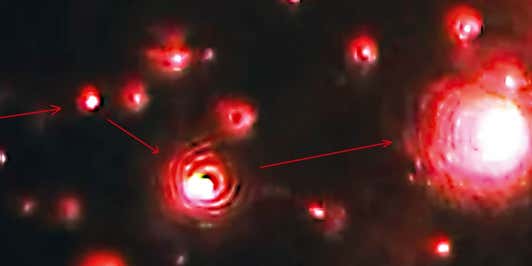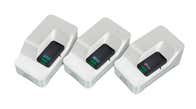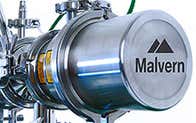Light scattering
Examining how your material scatters light provides a wealth of insight into its behaviour

Examining how your material scatters light provides a wealth of insight into its behaviour

Particles scatter light, this is a fundamental fact and similar to how the sky is blue, it is something we all encounter on a daily basis. This is caused by atmospheric particles scattering blue light mores strongly than red light.
The angle of light scatter, the frequency of the light scattering and the intensity of said scatter can be measured to determine the size, the charge and the molecular weight of materials. This is the core of many of our technologies.
For laser diffraction and X-ray diffraction, small angle X-ray diffraction (SAXS), and wide-angle X-ray diffraction (WAXS), we harness the principle that particles of different sizes have a unique light scattering signature, so by accurately measuring the light scattering over a wide range of angles with high sensitivity and extremely rapidly we can determine the particle/droplet size of powders, emulsions, sprays and suspensions.
However, as particles move substantially into the nanometre range there is a big falloff in how particles scatter light. A 10 nm particle scatters 1 million times less than a 100nm particle, so there is a point at which even by reducing the wavelength of the light source (which increases the amount of scatter) that the light scattering is best analyzed in alternate ways.
There are multiple theories that can determine light scattering. From particle size distribution (Mie scattering theory, Fraunhofer scattering theory, Rayleigh scattering theory) to an inversion algorithm, which can turn scattering into a size distribution.
We can look at the nano material at right angles to the laser and track how the particles diffuse (small particles move more rapidly than large particles). From this, it is possible to determine the translational diffusion coefficient (this is known as nanoparticle tracking analysis) or see how the scattered light changes over time as particles pass through it.
If it changes quickly it can be determined that fine particles are present, when it changes slowly then larger particles are present. This forms the basis of dynamic light scattering.


Electrophoretic light scattering involves passing an electric field through a liquid which makes particles move. The larger the charge on the particles, the faster they move.
We pass a laser through the particles and then recombine the scattered light with another part of the same laser that hasn’t been scattered. The resulting interference pattern allows an incredibly accurate measure of the speed of the particles to be measured.
If we measure the light scattering as a function of concentration (of polymers or biopolymers) at a variety of angles we can determine the molecular weight of the material in question and generate information on its structure.
Light scattering technology finds diverse applications across various industries due to its ability to provide valuable insights into particle size, shape, molecular weight, and other critical parameters.
Light scattering is extensively used in pharmaceutical research and development for characterizing particle size distribution, aggregation, and stability of drug formulations.
It plays a crucial role in ensuring the quality and efficacy of pharmaceutical products.
In biotechnology, light scattering techniques are employed for analyzing biomolecules such as proteins, nucleic acids, and viruses.
This enables researchers to study protein-protein interactions, determine molecular weight, and monitor the folding and unfolding processes.
Light scattering is essential for characterizing the size distribution and morphology of polymer particles, colloids, and emulsions.
It helps optimize processes such as polymer synthesis, formulation, and quality control.
In the cosmetics industry, light scattering is utilized for evaluating the stability and performance of cosmetic formulations.
It aids in determining the particle size of emulsions, suspensions, and powders, ensuring product consistency and efficacy.
Light scattering plays a vital role in food science and beverage manufacturing for analyzing particle size distribution, emulsion stability, and colloidal properties.
It helps in optimizing formulations and ensuring product quality and safety.
Light scattering techniques are employed in environmental monitoring for analyzing aerosols, particulate matter, and pollutants in the atmosphere.
It assists in understanding air quality, studying atmospheric processes, and assessing the impact of pollution.
We offer a range of advanced light scattering instruments tailored to meet the diverse needs of our customers. Our cutting-edge instruments deliver accurate and reliable measurements for a wide range of applications.
The smartest way to measure particle size
The Mastersizer range provides robust particle size analysis solutions, enabling precise characterization of particles ranging from nanometers to millimeters.
With advanced sizing technologies and intuitive software, Mastersizer instruments offer unparalleled performance and versatility.

Light Scattering for every application
Our Zetasizer instruments are designed for dynamic light scattering (DLS) and electrophoretic light scattering (ELS) measurements, allowing for the determination of particle size, zeta potential, and molecular weight of colloids and nanoparticles in solution.

Spray particle and spray droplet size measurement
The Spraytec system is specifically engineered for the analysis of sprays, aerosols, and droplets, offering real-time monitoring of particle size distribution, spray pattern, and droplet velocity.
It is indispensable for research and development in industries such as pharmaceuticals, cosmetics, and agriculture.

Robust, reliable, real-time particle sizing
The Insitec range offers robust in-line particle size analysis solutions for process monitoring and control in various industrial applications.
With real-time particle size measurement capabilities, Insitec instruments facilitate the optimization of manufacturing processes and product quality.
Mastersizer rangeThe smartest way to measure particle size |

Zetasizer rangeThe world’s most widely-used systems for nanoparticle, colloid and biomolecular particle sizing and particle charge measurements |

SpraytecSpray particle and spray droplet size measurement |

Insitec rangeRobust, reliable, real-time particle sizing |
|
|---|---|---|---|---|
| Technology | ||||
| Light Scattering | ||||
| Laser Diffraction | ||||
| Dynamic Light Scattering | ||||
| Electrophoretic Light Scattering | ||||
| Static Light Scattering | ||||
| Measurement type | ||||
| Particle size | ||||
| Molecular size | ||||
| Molecular weight | ||||
| Zeta potential | ||||
| Molecular structure | ||||
| Protein aggregation | ||||